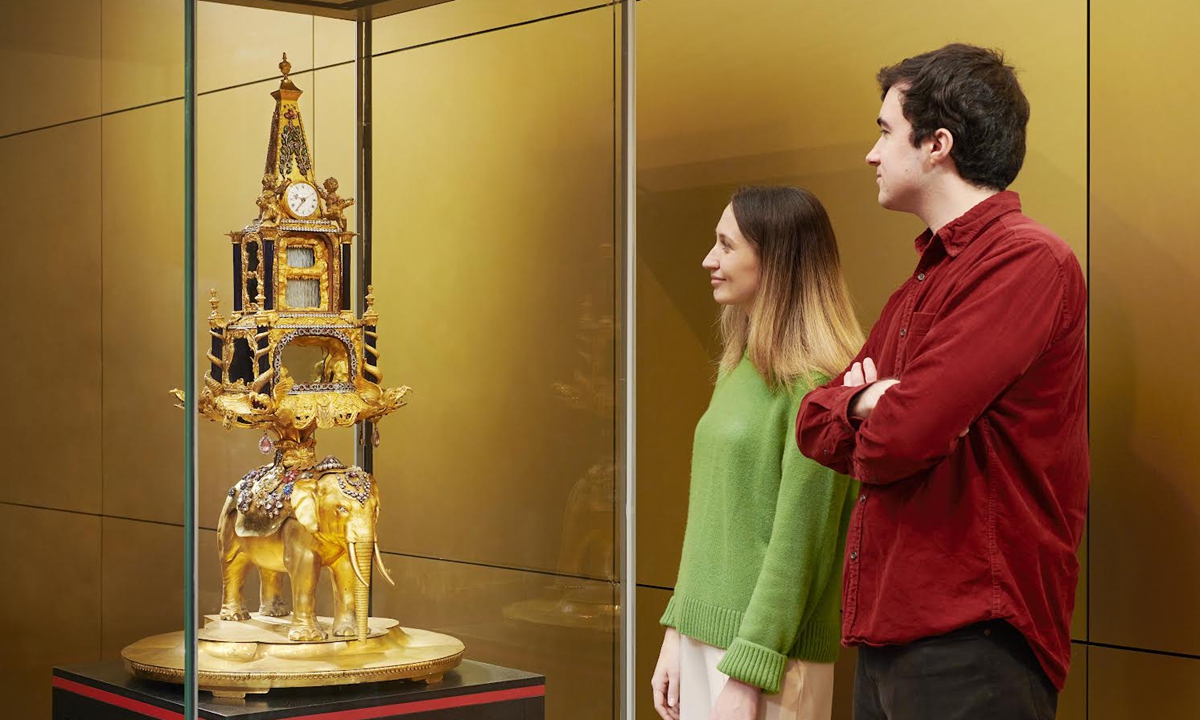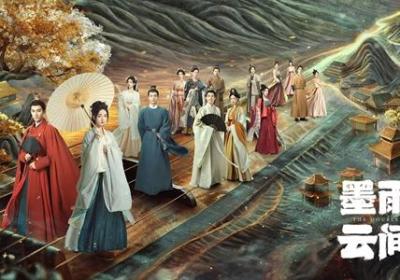
Zimingzhong: Clockwork Treasures from China's Forbidden City exhibition Photo: Courtesy of Science Museum London

Zimingzhong: Clockwork Treasures from China's Forbidden City exhibition Photo: Courtesy of Science Museum London
More than 300 years later, 23 clock treasures from the Forbidden City have returned to their place of birth - the United Kingdom. These awe-inspiring mechanical clocks, called zimingzhong, meaning "bells that ring themselves," take visitors on a journey back to the 18th century, exploring the technical expertise, creativity and international trade behind these ancient timepieces.
"The flamboyant combination of design flair and mechanical precision exemplified in these 300-year-old timepieces must be seen to be believed. We are deeply grateful to the Palace Museum in Beijing for entrusting us with these rare treasures from the Forbidden City," said Sir Ian Blatchford, the director and chief executive of the Science Museum.
This exhibition, "Zimingzhong: Clockwork Treasures from China's Forbidden City," unveils the clock treasures, presenting to the audience the perfect fusion of art, music and dynamic performance behind these exquisite constructions.
"The exhibition features 23 clocks primarily collected by three Qing emperors. We're also trying to use these clocks to tell a little bit of the story about the meaning of technologies and skills, the people and culture that happened during this small window of trade between Britain and China," Abbie Mackinnon, co-curator of the exhibition, told the Global Times.
'Heavenly Made' timepiecesUpon entering the exhibition hall, the first thing that catches the eye is the impressive one-meter tall copper-gilded Moving Pagoda Zimingzhong. Through accompanying videos, visitors can witness the intricate mechanism of the nine-story pagoda slowly ascending and descending.
The section "The Emperors and Zimingzhong" in the exhibition reveals the crucial role played by zimingzhong in early cultural exchanges. In the early 17th century, missionaries attempted to please the Qing emperors by presenting them with exquisite automatic devices. Decades later, Emperor Kangxi (1662-1722) began collecting zimingzhong, displaying them as "foreign curiosities" and demonstrating his mastery of time, the heavens and his divine right to rule.
Emperor Qianlong even wrote poems praising the gadget: "Precious and unique treasures come from foreign boats, more delicately made than the 'Palace Lotus' time-piece. It does not rely on water or fire, seconds and minutes tick by automatically. It is truly heavenly made, and reports the time by the sound."
Part of the appeal of zimingzhong is their demonstration of advanced music technology, playing a selection of popular European or Chinese songs. Throughout the gallery, visitors can listen to the accompaniment of clock melodies, including a snippet of the widely popular Chinese folk song "Jasmine Flower." As the music unfolds, visitors can experience the tranquil flow of time while admiring the clock treasures.
"Clock making during this period in Britain was at the top. From that perspective, Britain was very proud of this world-renowned skill that they had. However, you can tell they weren't really made for the general public," Mackinnon told the Global Times, adding that apart from some elite-class people, no one could really afford them. Many clocks during this period in the UK were much more downplayed, not nearly as ornate and beautiful.
Mackinnon believed that zimingzhong were specifically made for the Chinese market, specifically targeted at the emperors' taste. However, it wasn't that there was any kind of communication ahead of time. But there were enough missionaries who got into the imperial palace, coming back and writing and saying that the emperors love these Western clocks.
Although zimingzhong is aesthetically pleasing, they are not merely decorative. As timekeepers, they served various purposes, including organizing royal events and timing astronomical events such as solar eclipses.
According to Mackinnon, the ability to predict changes in the night sky with greater accuracy helped reinforce the belief present in Chinese cosmology that the emperor represented the connection between Heaven and Earth.
"Because it meant he was the only one who could connect Heaven and Earth, and these incredible artworks from distant lands proved the emperor's international influence," she said.
Witnessing cultural exchange
In the "Design" section of the exhibition, visitors can see some clocks reflecting British craftsmen's perceptions of 17th- and 18th-century Chinese culture. Chinoiserie, a popular style in 18th-century Europe inspired by Chinese, Japanese and other Asian arts and designs, is evident in "The Zimingzhong with Turbaned Figure." It highlights British people's interest in China but also their lack of cultural understanding.
Mackinnon showcased her favorite piece - the Copper-gilded Crane-Borne Pavilion-style Zimingzhong. This piece has many Chinese symbols, with a dragon carved on the top of the temple, the main body featuring a crane, and a longevity peach. The delicate casing and beautiful decorations are almost certainly Chinese. What's more interesting is that the mechanical part of this clock bears the signature of British clockmaker James Cox.
"This piece perfectly summarizes the message of cultural dialogue between China and Britain that our exhibition aims to convey," Mackinnon explained.
In the "Making" section of the exhibition, visitors can delve into the artistic skills and techniques required to create zimingzhong. An interactive mechanical device provided by the Hong Kong Science Museum allows visitors to personally experience and understand the complex internal workings of these clocks.
The exhibition coincides with the Chinese Lunar New Year, prompting Li Wan, a mother of two in London, to bring her daughters for a visit.
"It is a great opportunity for children to understand China's past prosperity and strength, as well as the development of trade with the West. They can also witness the wisdom of ancient people," Li told the Global Times, adding that visitors can gain insights into various aspects, from ancient Chinese timekeeping methods to the transition to modern clock timing techniques, and appreciate the intricate internal mechanics and exquisite external designs, as each exhibit seamlessly blending rich Chinese and Western cultural history.
Zimingzhong initially entered China from Guangzhou, Guangdong Province and the "Trade" section reveals the journey of these clocks from London to the coastal areas of southern China. Following this year-long trade route, British merchants, upon reaching the coastal areas of China, purchased sought-after commodities, including silk, tea and porcelain.
In 18th-century China, clocks like zimingzhong, which combined art, precise timekeeping, music and mechanics, were truly remarkable. However, curators also emphasized that mechanical clocks were not solely invented by Europe.
In the middle section of the exhibition, a scale model of the Chinese water-powered "escapement" reveals that in the year 1088, during the Song Dynasty, Su Song created the world's first water-powered astronomical clock tower. In the 1960s, scholars rediscovered an ancient text about it. This discovery challenges the long-held idea that mechanical clocks originated entirely in Europe. In fact, some elements of the invention may have emerged in multiple locations throughout history, including China.
The exhibition will last until June 2 this year.







